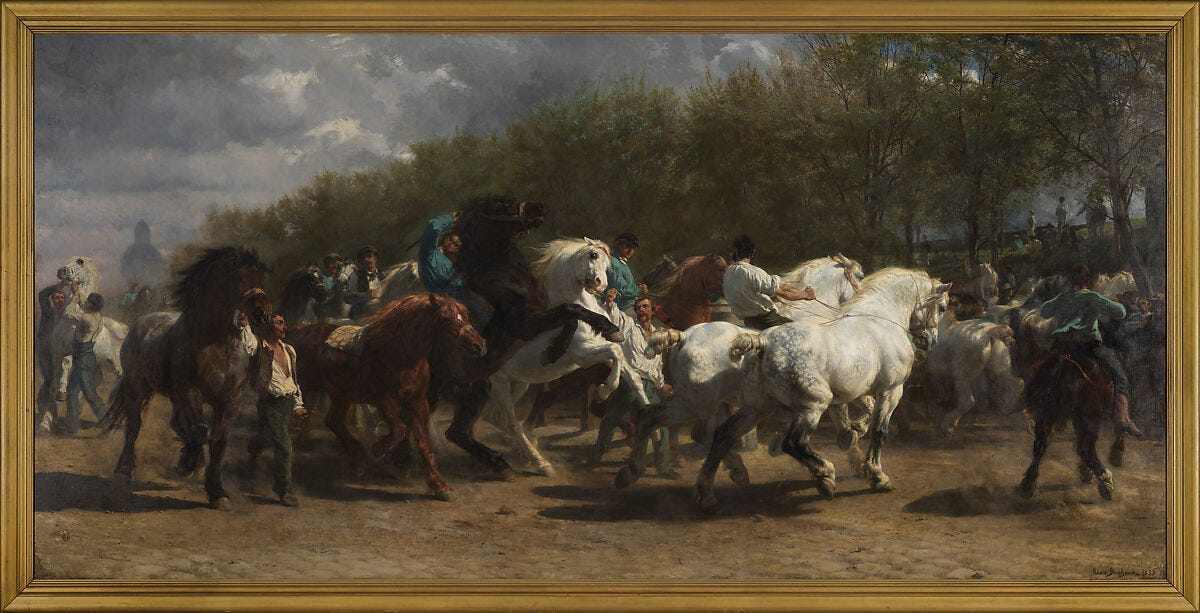Free Rein: Bonheur, Degas, and Painting Horses
In "The Horse Fair" and "At the Races," both Rosa Bonheur and Edgar Degas found beauty in a familiar subject.

The Horse Fair demands your attention when you walk into the room.
Housed in the Metropolitan Museum of Art in New York City, the painting occupies an entire wall. Visitors stop in their tracks, compelled by some magic to take in the jostling horses and their intrepid riders.
Of course, everyone is there to see the Impressionists—the artists who, two decades after The Horse Fair was painted, would shock the Parisian public. The gallery rooms for early nineteenth-century art remain less busy than those that house Claude Monet’s water lilies or Edgar Degas’s ballerinas.
But viewers linger by The Horse Fair. The painting’s dynamism, its sense of movement, the musculature of the riders and the extraordinary precision of the horses—it is a painting full of theatricality. Storm clouds gather overhead. The wind sweeps through the horses’ manes. In the mid-nineteenth century, a painting of such size and grandeur (m…


